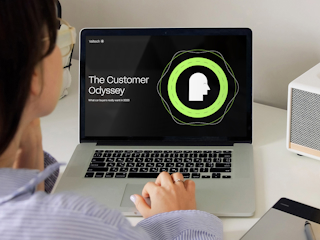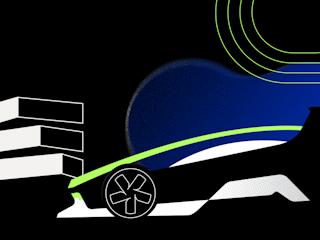A global shift is underway
Imagine a car that is no longer a static product but a living, evolving platform learning from every trip, adapting to driver preferences and updating its capabilities overnight. This is no longer a vision of the future. It is the new reality of the Software-Defined Vehicle (SDV).
Across the globe, the automotive industry is rapidly transitioning from hardware-first thinking to a software-centric paradigm where the car’s value is defined not just at the point of sale but over its entire lifecycle. The emphasis has shifted from simply building cars to continuously delivering value by delighting customers, reducing operational costs and opening new revenue streams.
Nowhere is this shift more visible than in Asia with China leading the charge.
China’s playbook: Speed, scale and customer value
China has proven to the world that speed matters with new vehicle programs being executed in less than two years — from concept to market launch. Agile decision-making, vertically integrated supply chains and modular software architectures allow Chinese OEMs to rapidly deliver innovation at scale.
What truly sets them apart, however, is not just the pace of delivery. It’s how their software teams are organized and measured.
In many global OEMs, software development teams typically work on a specific vehicle program until SOP (Start of Production) and then shift to the next platform or model. This creates a mindset where the software is considered “done” at launch.
Chinese OEMs take a fundamentally different approach. Their software teams continue working well beyond SOP, because their KPIs are not limited to delivery milestones. They are tied to real-world usage, operating efficiency, profitability and ROI of the software features.
After launch, teams actively analyze feature adoption, customer feedback and field data, then release continuous improvements to maximize customer value and financial performance. This creates a living product where every software update is designed to improve engagement, reduce cost and create new revenue opportunities.
By aligning software team performance with business outcomes rather than just delivery deadlines, Chinese companies are turning SDVs into a continuous value engine, not a one-time release.
Japan’s moment of reflection
At the SDV Expo by Automotive World 2025 in Tokyo, our conversations with leaders from Toyota, Nissan, Honda, Panasonic, Denso, AUTOSAR, The Linux Foundation, Deloitte and various open-source foundations revealed a shared recognition: Japanese OEMs are fully aware of this paradigm shift. They have the engineering excellence and global reach to lead but face challenges in speed, ecosystem complexity and business model innovation.
The key challenges Japanese OEMs must solve include:
- Long and rigid development cycles that are excellent for hardware but slow for software iteration
- Complex supplier ecosystems that hinder agile collaboration
- Legacy vehicle platforms not designed for software-first architecture and OTA evolution
- Mounting operational costs in connected services, putting pressure on ROI
- These challenges are not insurmountable — but they require a fundamental rethink of organization structure, processes, platforms, and partnerships
Lessons from the leaders
OEMs worldwide can take inspiration from the Chinese playbook and adapt to their strengths and environments by:
- Launching faster and using OTA as a continuous improvement tool
- Experimenting with new revenue models like subscriptions, feature unlocks and data-driven services
- Prioritizing digital experiences that are intuitive, personalized and valuable
- Building modular software platforms that allow for reuse and faster rollout across vehicle lines
- The focus must shift from building the perfect car to building the perfectly evolving car
The ROI imperative: Sustainability beyond the vehicle
Globally, automotive executives are grappling with a critical question: How do we make connected mobility financially sustainable?
Operational costs for connected services are rising. Without a strategy for software reuse, centralized computing and scalable platforms, profitability is at risk.
This is where the continuous improvement mindset becomes essential. OEMs can no longer afford to view software delivery as a one-time project. It must be treated as a lifecycle commitment. Leading companies — particularly in China — are already doing this, with teams whose KPIs extend beyond SOP and focus on maximizing feature adoption, reducing operational inefficiencies and driving real-world ROI through ongoing updates and refinements.
SDVs, when managed this way, offer a powerful lever for ROI:
- Centralized compute architectures lower ECU costs and simplify complexity
- Software reuse and modularity accelerate deployment and reduce waste
- Predictive maintenance and data analytics lower warranty and service costs
- Dynamic monetization ensures revenue continues over the vehicle’s lifetime
When executed with a continuous improvement operating model, SDVs are not just a technology upgrade. They become a living, evolving business model, designed to deliver value long after the vehicle leaves the assembly line.
Valtech Mobility’s perspective
At Valtech Mobility, we are privileged to work alongside global OEMs and Tier 1 suppliers in navigating this transformation.
Our AI-native Nexus Platform, built in collaboration with Google Cloud, is designed precisely for this new reality. Nexus enables OEMs to:
- Accelerate development cycles through rapid prototyping and deployment
- Enable cloud-scale orchestration for OTA, data pipelines and feature management
- Support continuous post-SOP improvement, aligning software development with real-world KPIs like feature adoption, operational cost reduction and ROI
- Deliver personalized experiences that delight customers and unlock new revenue streams
With Nexus, OEMs can confidently shift from concept to implementation while keeping their software ecosystem agile and aligned to real-world business outcomes.
The road ahead
The SDV era is not a distant horizon. It is here, now. The winners will be those who can combine speed with precision, innovation with sustainability and technology with customer value.
For OEMs around the world, this is a pivotal moment to reimagine not just how cars are built, but how they live and grow with their customers.
At Valtech Mobility, we are proud to play our part in shaping this future. We help our partners to set the pace for the next decade of intelligent, connected mobility.











